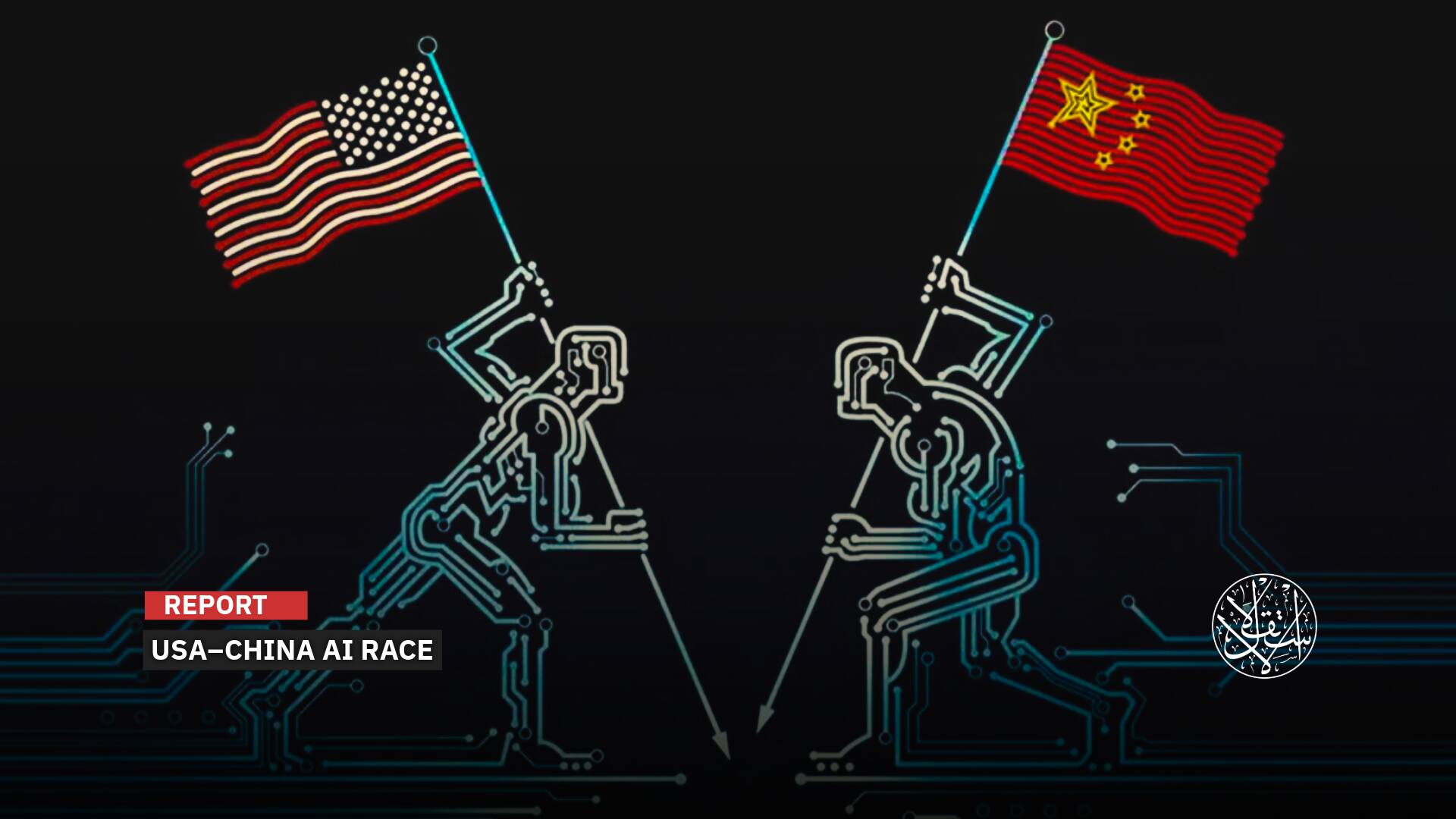Over 100 Million Chinese Muslims — China's Assault on Islamic Heritage

The number of Muslims in China exceeds those in Saudi Arabia, Iraq, and Syria combined.
In a blatant attempt to erase the connections between Islam and Chinese civilization, the Communist Party authorities in China have been systematically demolishing historical mosque minarets and domes, replacing them with Buddhist-style structures.
This goes beyond restricting religious freedom and operating brainwashing camps targeting Uighurs; it extends to a radical transformation of mosque architecture and even prohibiting traditional Muslim dietary customs.
Under the guise of development and combating "intellectual invasion," the Chinese government has sought to denigrate various aspects of Uighur life as "backward," seeking to alter prevalent food habits and customs among Muslim communities.
The latest victims of this destruction include the Shadian Grand Mosque and the Najiaying Historical Mosque, which were converted into Buddhist-like temples after their iconic architectural features were demolished.
This systematic demolition of Islamic heritage dates back to 2018, when the Chinese government announced its plan to "Sinicize Islam," claiming its aim is to resist foreign architectural styles and imbue Islamic architecture with Chinese characteristics. By erasing these cultural and historical connections, the Chinese Communist Party is engaging in a blatant assault on the identity and traditions of its Muslim population (130 million Chinese Muslims).
What is the Story?
On May 25, The Guardian published two different pictures of the largest mosque in China, before and after the Communist Party completely altered its appearance.
The images showed the mosque in its original form, then after the removal of its eight domes and minarets, replaced with alternatives resembling Chinese-style columns akin to Buddhist temples.
This mosque is the Shadian Grand Mosque, the latest major mosque in China to lose its Arab-Islamic architectural style, with its domes demolished and minarets drastically altered as part of what is termed a purification campaign to impose Chinese characteristics on Islamic places of worship in the country.
The Guardian clarified that the Shadian Grand Mosque, one of China's largest and most magnificent mosques, is located above the small town of Shadian in the southwestern Yunnan province, named after it.
Until 2023, the mosque complex, covering an area of 21,000 square meters, featured a large building topped with a green dome adorned with a crescent, surrounded by four smaller Islamic domes and four towering minarets, according to satellite images.
The mosque's entrance was adorned with a large crescent and star made of bright black tiles. However, images from 2024 reveal how all of this has been erased.
The dome was removed and replaced with a roof resembling traditional Han Chinese architecture. The minarets were shortened and transformed into structures resembling Chinese pagodas. Only a faint trace remains of the crescent and star tiles that once distinguished the mosque's front facade.
When these mosques became targets, Muslims of the Hui ethnicity (about 11 million people), residing in the western and central provinces of China, protested against the demolition of their mosques and the erasure of their identity. Police clashed with them in May 2023.
Protests by Hui Muslims in the Yunnan region against the demolition of historical mosque domes, the removal of Islamic features, and the installation of Buddhist-style roofs led to the arrest of hundreds, with Chinese flags and Communist Party slogans raised above them.
An Escalating Campaign
An escalating campaign has seen thousands of historical mosque domes removed in southern and western China, where the Muslim majority resides. This campaign, initiated by Chinese authorities in 2021, aims to make mosque appearances "more Chinese," as claimed.
Another mosque that was transformed is the historical Najiaying Mosque, located less than 100 miles from Shadian. Recently, its Islamic features were removed in a process described by the Communist Party as "renovation and development."
The history of Najiaying Mosque dates back to the 13th century and has undergone multiple expansions over the years, adding buildings along with four minarets and a domed roof.
In 2019, parts of the mosque were classified as protected cultural relics. However, in recent years, the Chinese Communist Party's strict restrictions on religious practices have intensified, with heightened surveillance of religious leaders.
Under this policy, Najiaying Mosque was forced to host meetings to read Maoism — the ideology and political thoughts of the Communist Party. Communist slogans were painted on walls to compel worshipers to read and pledge loyalty.
Further, Communist Party authorities seized mosque assets, imprisoned imams, closed religious institutions, restricted the use of non-Chinese languages such as Tibetan or Uyghur, and imposed severe restrictions on Muslim scholars and writers.
Xining residents claim that the imam of Dongguan Mosque and its director were briefly detained and coerced into signing for the demolition of Islamic domes. Additionally, preparations are underway to remove the dome from the marble Nanjiaying Mosque in Xining, surrounded by bamboo scaffolding.
Dr Hannah Theaker, Lecturer in History and Politics at the University of Plymouth, describes the Chinese-style makeover of mosques as a pandemic spreading from one province to another, aiming to eradicate Islamic architectural traditions, even in prominent mosques like those in Yunnan.
Ma Ju, a Chinese Hui activist based in New York, said the renovations were “a clear message to destroy your religion and your ethnicity.”
Since the Communist Party took power in 1949, authorities have targeted all forms of religious practice, reaching a peak in 1975 when Hui Muslims in Yunnan protested the closure of a mosque, leading to the army's invasion and the death of 1,600 Muslims.
While the Chinese constitution guarantees freedom of worship, strict boundaries are imposed, recognizing only five religions, and imposing severe restrictions on their practices.

‘Chinese Islam’
An investigation by CNN on May 30, 2023, revealed that the campaign to demolish mosque domes in China is part of an extensive initiative launched by Chinese leader Xi Jinping called Sinicization of Muslims or Sinicization of religion. This aims to create what they call "Chinese Islam," akin to Western attempts to shape a so-called "Western moderate Islam," which aligns with non-Muslim preferences and avoids strict adherence to Islamic Sharia.
CNN highlighted that Muslims have protested vehemently against the demolition of their mosque domes, the alteration of their Islamic heritage, and the placement of defiling banners by the Communist Party. Thousands have now started defying Chinese authorities in defense of mosques, particularly in the Hui region, where over a thousand mosques have had their domes and minarets demolished.
Activists and human rights groups confirmed that authorities have demolished over 200 mosque domes and minarets in Yunnan province alone, in addition to more than a thousand mosques in the northwest of the country.
Activists emphasize that the ultimate goal of the Communist Party is to execute a policy of cultural and religious genocide, akin to what has been done to the Uyghurs in Xinjiang. During Xi Jinping's visit to Xinjiang in 2023, he announced more aggressive plans toward Muslims, reinforcing Chinese characteristics in Islam, a process referred to as the Sinicization of Islam.
Government officials have urged deeper promotion of Sinicization of Islam and stronger control over illegal religious activities, as reported by Agence France-Presse on August 26, 2023.
Under Xi's leadership, policies have radically changed, reasserting Han Chinese nationalism, which dates back five thousand years, fused with contemporary Marxism.
Foreign Affairs magazine highlighted in a report on September 6, 2023, the erasure of Muslim identity and the demolition of their mosques.
It warned of consecutive campaigns targeting Hui Muslims in China, aiming to erase their Islamic and ethnic identities, similar to what happened to Uyghur Muslims, whose mosques and identities were erased in detention camps.
A Reuters field report on May 13, 2021, revealed the disappearance of many minarets from mosque corners in Xinjiang, with security personnel stating, “There are no mosques here.”
The agency visited more than 24 mosques in seven provinces in southwest and central Xinjiang (out of 20,000 in the city) and found that most of the mosques it visited had been partially or completely demolished.
Communist authorities placed signs at some open mosques stating that worshippers must register before entry, barring entry to outsiders, foreigners, and anyone under the age of 18.
Open mosques are equipped with surveillance cameras, Chinese flags, and promotional banners pledging allegiance to the ruling Communist Party.
A report by BON News, specializing in China affairs, indicated that the Muslim population in China has surpassed 100 million, reaching around 130 million, which constitutes approximately 10% of its total population. This exceeds the combined number of Muslims in Saudi Arabia, Iraq, and Syria.
Sources
- Last major Arabic-style mosque in China loses its domes
- Thousands of ethnic minority Muslims defy Chinese authorities in defense of mosque
- China is removing domes from mosques as part of a push to make them more 'Chinese'
- Mosques disappear as China strives to ‘build a beautiful Xinjiang’
- China Is Trying to Remake Uyghur Kitchens










